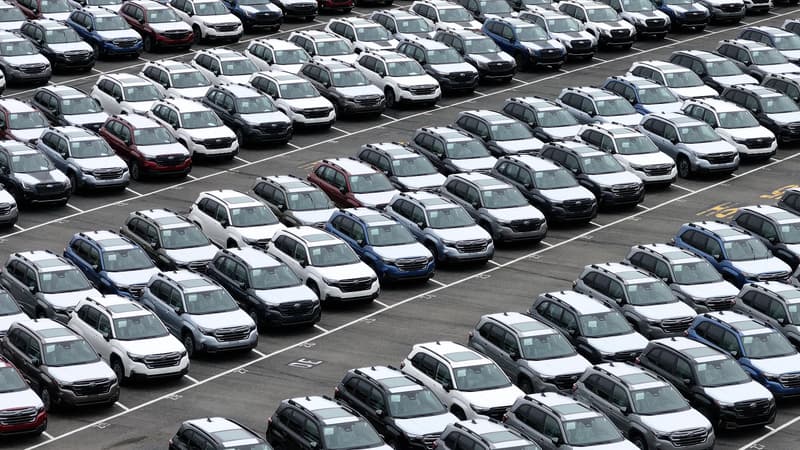This is usually a symptom of an economic recession. The American working classes are finding it increasingly difficult to pay off their car loans. Nearly 6.5% of auto loans granted to “subprime” borrowers are at least two months behind on payments, according to data published by the Fitch agency. This is more than during the last three recessions recorded in the United States (2001, 2008-2009, 2020).
These failures are part of an underlying trend, as monthly auto loan payments have reached historically high levels, rising from $130 in January 2020 to more than $600 in 2023, according to a study by the US central bank. The reason: the sharp increase in the cost of vehicles, a trend that is also observed in France. The average price of a new car exceeded $50,000 (43,110 euros) for the first time, up from $33,000 in 2015, according to Cox Automotive. This move has increased the amount and duration of auto loans.
At the same time, bank lending rates have increased in recent years, due to monetary tightening initiated to curb inflation. Pressure has increased on the poorest Americans. And now a growing proportion of them are caught in a bind as the economy shows signs of contraction.
Signs of slowdown
The unemployment rate is trending higher, while job creation has been significantly lower than expected. In August, the United States created 22,000 jobs, while analysts expected 75,000 job creations during this summer period. Certain categories of workers are particularly affected, such as African Americans.
Furthermore, Americans remain scarred by the period of inflation that followed the pandemic. The average real weekly wage has increased little since the end of 2019 (+3.9%), according to data from the Federal Reserve Bank of Saint-Louis. For comparison, during a similar six-year period between the end of 2013 and the end of 2019, average salaries had increased by 8.3%, or twice as fast.
However, on paper, the United States seems to be doing well. Despite the increase in trade tensions, growth remains dynamic, standing at 3.8% in the second quarter at an annualized rate. But if you look closely, this apparent good health can be explained above all by the frenetic competition of technology giants to build their data centers.
A conclusion confirmed by the International Monetary Fund in mid-October.
Source: BFM TV


